Content
- 1 Detailed description and characteristics of the cabbage variety Nadezhda
- 1.1 Description and characteristics of the variety
- 1.2 Advantages and disadvantages of the variety
- 1.3 Growing seedlings
- 1.4 Growth conditions for this variety
- 1.5 How to prepare the soil for growing cabbage Nadezhda
- 1.6 How to properly plant cabbage in open ground
- 1.7 Variety care after planting
- 1.8 Diseases and their prevention
- 1.9 Harvesting and storage rules
Detailed description and characteristics of the cabbage variety Nadezhda
You may not know new varieties of white cabbage - so many of them have appeared recently, you need to know the old, proven ones. The Nadezhda variety has been cultivated for a long time and successfully by summer residents, farmers and large agricultural enterprises. Using the standard technology, heads of cabbage of the optimal size, maturing, with a high content of useful microelements are obtained.
Description and characteristics of the variety
Mid-season plant, ripens in the period of 110-130 days from the emergence of shoots. It can be grown in all regions of the Russian Federation with the exception of the northern region., which includes Karelia, Murmansk and Arkhangelsk regions, the Komi Republic.
The purpose is universal:
- Pickling.
- Salads.
- Culinary dishes prepared with heat treatment.
The main characteristics of the variety:
- the standard size of heads of cabbage is 3.5 kg.
- The declared yield is from 10 kg / m² to 14 kg / m². Landing scheme 0.6 * 0.6 m.
- Round-flat heads of cabbage of dark green color have a short stump inside and a waxy coating on the outer surface of the leaf.
The rosette is medium in diameter - 70 cm. The structure of the head is dense, not prone to cracking. You can grow Nadezhda cabbage by sowing seeds directly into the ground or through seedlings. Seedlings are ready for transplanting at the age of 25-30 days from germination.
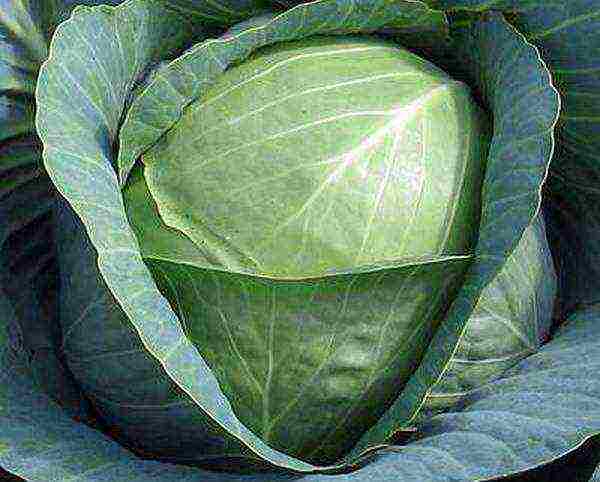
Advantages and disadvantages of the variety
For clarity, all the advantages and disadvantages of the variety are summarized in the table.
| Dignity | Flaws |
| yield is consistently high | may suffer from bacteriosis |
| transportability is good | struck by the keel |
| presentation, good taste | |
| does not crack | |
| ideal raw material for fermentation | |
| susceptibility to infections is low | |
| resistant to flowering | |
| can be grown in any region | |
| stored for at least 5 months |
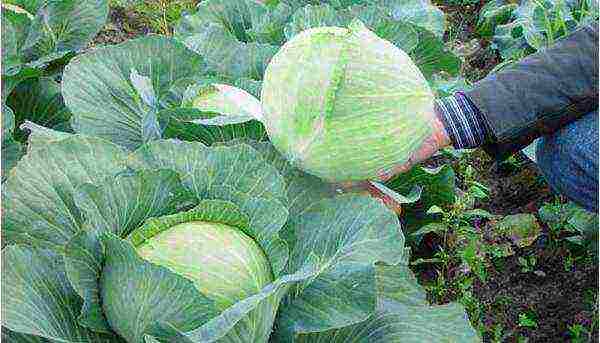
Growing seedlings
To obtain a harvest of the declared size in August-September, seeds for seedlings are sown in April. Prepare seedling boxes in autumn. To refuel them, mix in equal proportions:
- sand;
- peat;
- land from the garden.
Be sure to disinfect the soil prepared by yourself. A pink solution of potassium permanganate is suitable. Sow cabbage seeds to a depth of 1.5 cm. Keep the boxes in the light and warm until sprouting. When the seeds hatch, lower the temperature (10-15 ° C) and light it up.
In greenhouses and polycarbonate greenhouses, it is easier to maintain an optimal regime for the growth of seedlings.
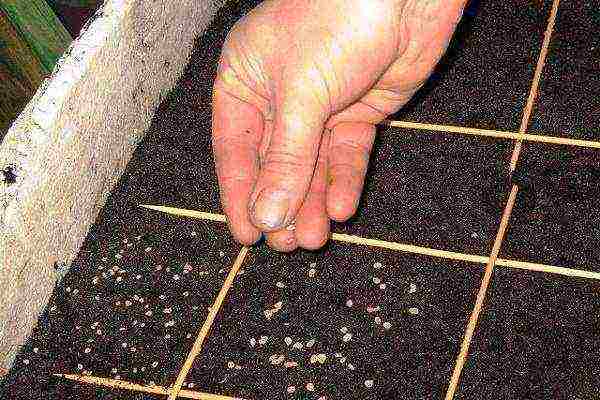
Growth conditions for this variety
When choosing a location, take into account a number of factors that directly affect the quality of taste, size and structure of the heads of cabbage. The quality of the crop is influenced by:
- Illumination.
- Crop rotation.
- Acidity.
- Fertility.
- The quality of soil cultivation.
Shade, partial shade to exclude. The beds should be illuminated by the sun all day. Otherwise, the heads of cabbage will be loose, excess nitrates will accumulate in them. Fruits grown in the shade are less well stored. For the health of cabbage, it is imperative to observe crop rotation. Plant after melons, green manures and nightshades.
The variety does not like acidic soils. Lime the soil no more than once every 5 years. In between, to lower the acidity level, add ash, chalk, dolomite flour for digging.
The yield declared in the description is obtained on cultivated soils with a sufficient amount of humus. The presence of weeds can provoke keel in plants.
How to prepare the soil for growing cabbage Nadezhda
To obtain full-fledged heads of cabbage, you need potassium, phosphorus, nitrogen and trace elements: copper, manganese, copper. The soil depletes over the years, it is necessary to restore its fertility after each sowing season.
Nadezhda responds well to organic matter (manure, humus, compost) mixed with peat. Any organic fertilizers are recommended to be applied in the fall. Minerals (phosphorus, potassium, nitrogen) are equally beneficial when applied in autumn and spring.
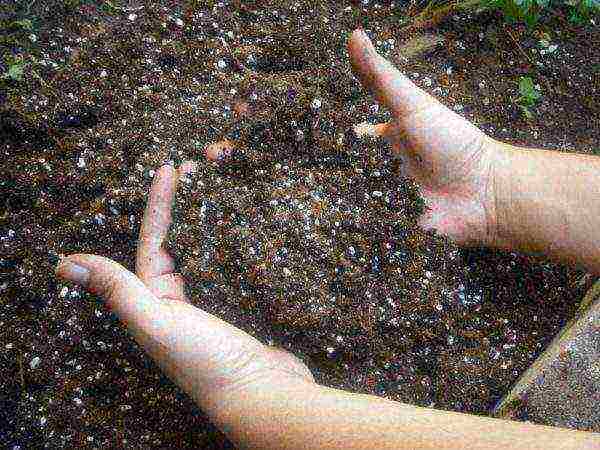
How to properly plant cabbage in open ground
Seedlings of mid-season cabbage varieties are planted after May 15. By this time, she has a well-formed, fibrous root system and a few leaves. The seedlings reach this development in 2 weeks.
For seedlings, you need to prepare holes by placing them at a distance of 0.6 m from each other. Some gardeners prefer to plant the cabbage in a groove dug to a depth of 25 cm.
Bury the seedlings up to the cotyledonous leaves. Water the soil after transplanting abundantly until the soil is viscous. Planted in well-moisturized soil, the seedlings do not wither and grow quickly.
Seedlings can be shaded for a week with buckets, boxes, cardboard boxes. In the shade, she suffers less from sunburn. When the topsoil dries up, water the plantings. The recommended watering scheme is once every 3 days. The rate of water is 10 l / m².
Variety care after planting
After planting, insist the mullein and water the cabbage patch with it after 3 weeks (1 liter per bucket). Water the cabbage abundantly from July to August at least once a week.
Loosen the soil weekly. Before closing the leaves of the plant, spud 2 times. Use the ash for disease prevention and root feeding. Ash rate for dusting 1 sq. m. soil 250 g. 2 weeks before harvesting, stop watering.
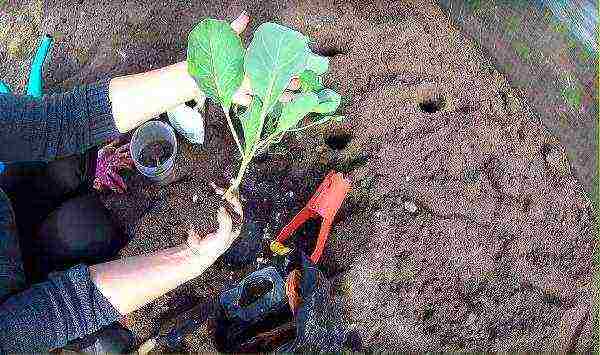
Fertilization chart.
| Phase | Fertilizer | Quantity (g / m2) |
| 10 days have passed since landing in the ground | urea, superphosphate, potassium chloride | 10:20: 20 |
| heads of cabbage are tied | urea, superphosphate, potassium chloride | 10: 30: 15 |
| 14 days after the 2nd | superphosphate, potassium chloride | 25: 15 |
Diseases and their prevention
Rare plantings of cabbage do not suffer from caterpillars. A fine mesh stretched over the ridge will help protect cabbage leaves from gluttonous pests. Many gardeners use pest drugs:
- Fitoverm.
- Spark.
Manual collection of caterpillars and cold water from the plumbing system helps. Leaves can be rinsed in the evening with a stream of water, the soil under the heads of cabbage can be loosened after the "shower".
To prevent diseases and pests, dust the soil with ash or dolomite flour. Loosen the aisles. Remove damaged leaves. Pull up weeds regularly.
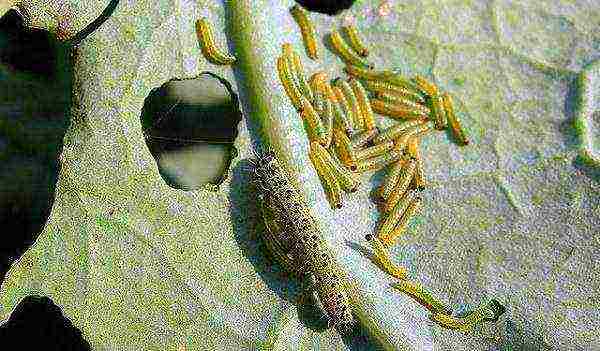
Harvesting and storage rules
Nadezhda, which has survived sub-zero temperatures below -6 ° C, is poorly stored and loses its marketability. A short drop in temperature from -2 ° C to -3 ° C is permissible.
Cabbage intended for winter storage must be lowered into the cellar when frost sets in. Harvested for fermentation can be stored in cold rooms... Fermentation experts believe that heads of cabbage are ready for salting if they have been frozen in the soil down to -4 ° C.
Do not hesitate and choose the Nadezhda cabbage variety for planting. Easy care for her will provide family heads of cabbage for fermentation and winter storage.


